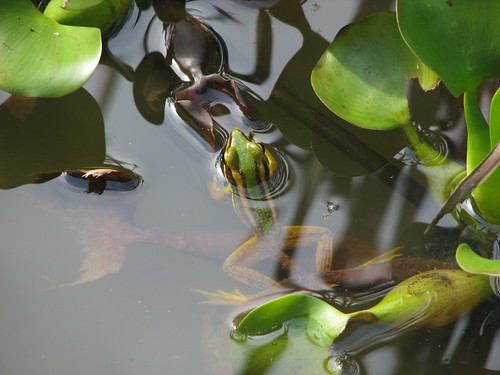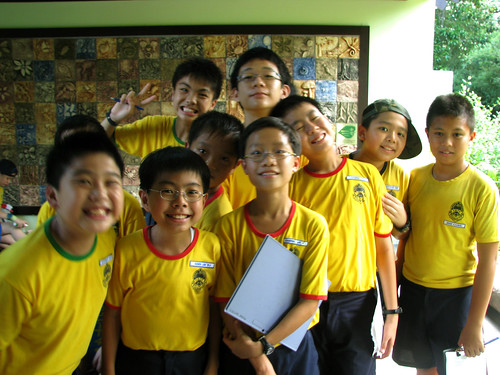
The Mangrove Cannonball (Xylocarpus granatum) is so named due to its big rounded fruits as seen here. As with most plants in this habitat, they are dispersed by water, whereby the fruit will split into several buoyant angular seeds after falling onto the ground.

Slightly ahead, there were several Mangrove Horseshoe Crabs (Carcinoscorpius rotundicauda) creeping on the mud. These creatures actually have blue blood! This is because they possess copper instead of iron in their oxygen carrying protein, known as haemocyanin.

Nipah Palm (Nypa fructicans) is a plant that everyone can relate to since most of us like to eat ice-kacang. The whitish gelatinous stuff beneath the ice, attap chee actually comes from the seeds of this palm.

Beccari's Tent Spider (Cyrtophora beccarii) builds a 3D web with a dome shaped tent structure inside. The spider normally hides inside the tip of the tent, which is a silk tube and that is also the place where the egg sacs were kept.

While passing by one of the mangrove trees, I spotted an animal running into the tree cavity. From the fleeting glimpse before it ran inside, it seemed like a juvenile monitor lizard. You can actually see the eyes peeping out from the hole.

Here is another view of an adult Malayan Water Monior Lizard (Varanus salvator) which gave RY quite a scare. ;p

There were many curious circular engravings on the bark of this dead Buta Buta plant (Exoecaria agallocha). These markings were actually drilled by the Mangrove Longhorn Beetle (Aeolesthes holosericeus) and it is said that they can be found in large numbers under them.

At the main bridge, RY spotted another horseshoe, probably a Coastal Horseshoe Crab (Tachypleus gigas) which can be differentiate from the other by its angular shaped tail.

There were several keen-eyed students that spotted three Common Greenback Frog (Rana erythraea) in the freshwater pond.

It is always fun to guide a group of enthusiastic participants anytime!
But spending a whole hot day out here guiding is taking a toll on me now. Having a sore throat and slight fever currently. =S

1 comment:
haha. fairfield? cool! hah thats my pri/sec school.
get well soon!
Post a Comment